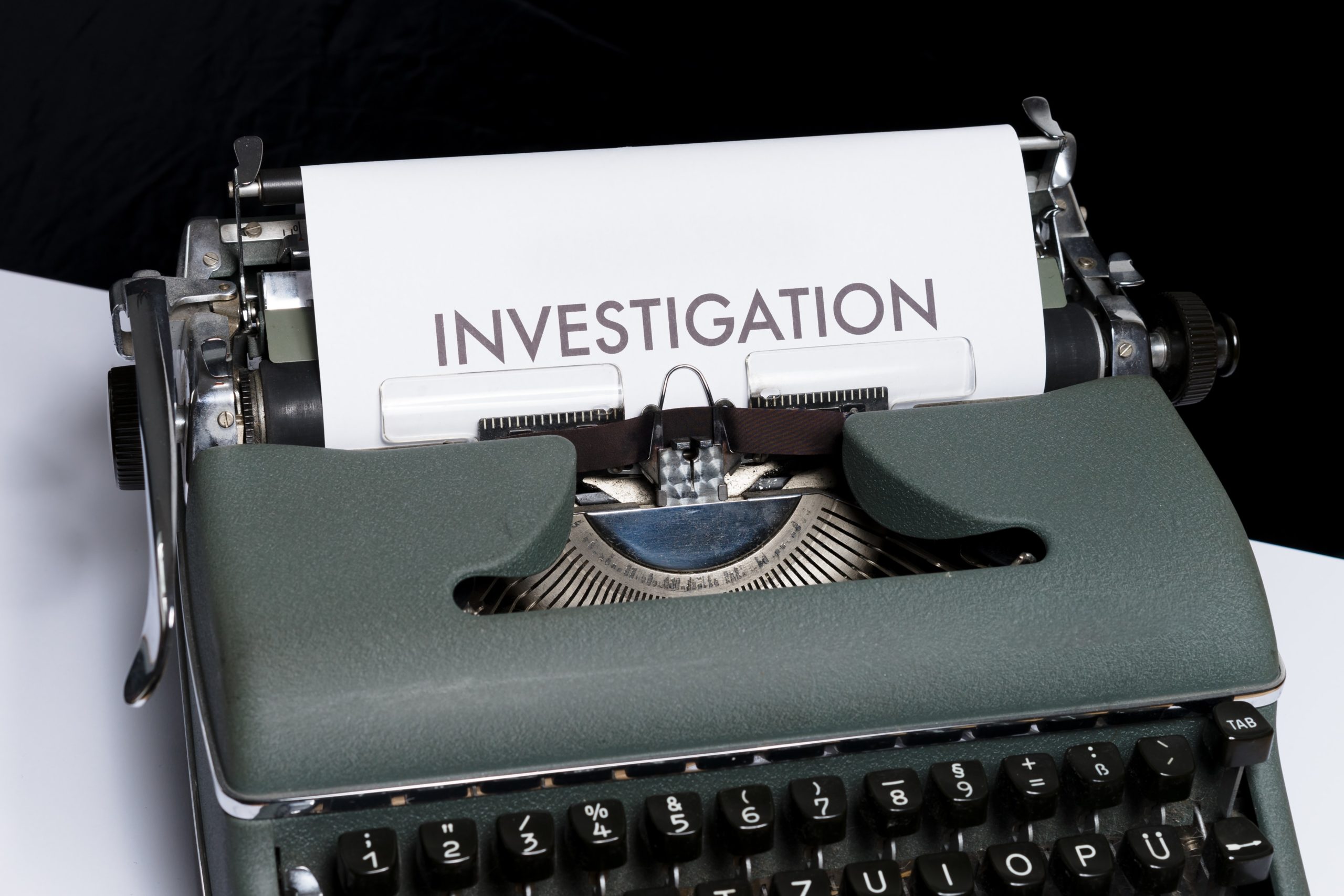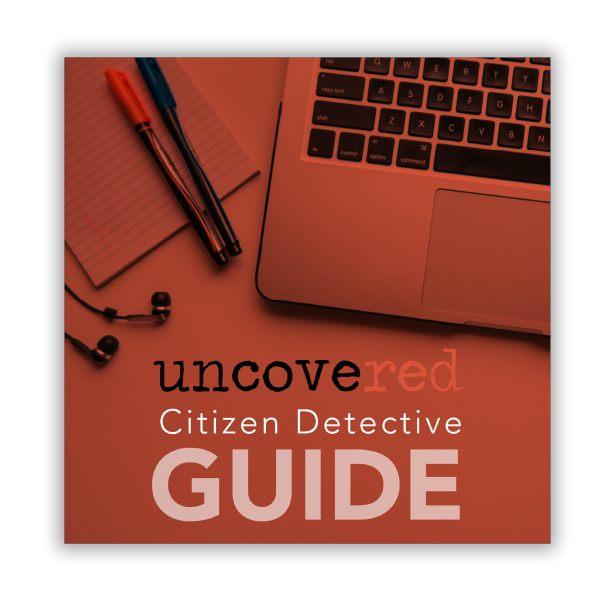Every investigation starts with the gathering of evidence that helps outline actors, events and motives that develop a narrative, whether it supports an accuser or an accused.
Though many investigations start with eyewitness testimony, according to the National Center for State Courts, an abundance of research dating back to the 1960s demonstrates it is among the most unreliable forms of evidence. That’s because of the pliability of memory, the relativity of perception and bias.

In fact, it’s so unreliable, the Innocence Project reports 70% of wrongful convictions overturned by DNA involved eyewitness testimony. Kirk Bloodsworth is one of the 375 inmates who have been exonerated by DNA testing so far. The former Marine, who was convicted in 1984 for the murder of a 9-year-old Maryland girl, had served nearly 9 years on death row before being exonerated. His conviction was based on the testimony of five witnesses. No physical or circumstantial evidence had linked him to the crime.
With the lack of confidence in human testimony, investigators rely on a variety of investigative tools — some “ancient” low tech and others cutting-edge high tech. Here is a sampling of the investigative tools that can be used by investigators, including law enforcement officers, prosecutors and lawyers to gather, evaluate and organize the evidence to build a reliable narrative.
Chemistry
The science of chemistry can be used in several ways during the course of an investigation. It can start at the crime scene with the use of an agent, such as Luminol, to detect blood. Chemicals also can be used at the crime scene to analyze hairs, fibers, soil, explosives, gunshot residue, fire debris, controlled substances/drugs and lubricants, before being used during the autopsy for toxicology screens.
Forensic chemists, for instance, can be called to a scene to collect, analyze and identify biological and non-biological trace evidence through techniques, such as optical analysis, gas chromatography and ultraviolet spectrometry. Chemists rely on a wide range of tools and procedures because of their sometimes destructive nature and the wide range of unknown substances that could be present at a scene.
Databases
Keeping track of information can be challenging during investigations, making databases an invaluable tool. Investigators may maintain their own databases to list and organize witnesses, evidence and events or tap into regional or national databases for fingerprints, statistics or input information on missing adults and children. The Federal Bureau of Investigation, for instance, maintains the Combined DNA Index System, generally known as CODIS, a program of support for DNA databases used as one of many investigative tools within the criminal justice systems across the nation.
DNA
Though the double helix first was identified in the late 1860s, it wasn’t until 1987 that its analysis joined the lineup of investigative tools used by law enforcement and the criminal justice system in the United States. DNA can be used to identify suspects and victims and to help investigators distinguish the individual to whom a particular sample of blood, tissue or bone belongs. DNA has been used both to convict and to exonerate suspects of crimes because it is considered about 95% accurate. DNA doesn’t always necessarily pinpoint an exact individual, but because of the low likelihood of genetic overlap, it can dramatically narrow down a pool of suspects.
Facial recognition
One of the latest additions to the lineup of investigative tools is facial recognition. This technology, which relies on artificial intelligence, gives law enforcement the ability to submit an image into a database to compare them with mugshots, driver’s licenses, jail records and other images scraped from the internet to identify a suspect. The technology is used by police departments of all sizes because of the comparatively low cost to other official equipment. According to one statistic, 3,000 law enforcement agencies use Clearview AI, a facial recognition search engine that bills itself as the “world’s largest facial network.” Based on a recent count, the database contained 3 billion images that have been scraped from the internet. Despite its widespread use, facial recognition software has been criticized by organizations and individuals who think it infringes on privacy and can lead to inaccurate results, causing people to be wrongfully arrested.
Fingerprints
Formally known as dactyloscopy, fingerprinting has been used since ancient times when Babylonian King Hammurabi appeared to have law enforcement record fingerprints when individuals were arrested. Fingerprinting is considered a nearly infallible means of identification of both suspects and victims because the ridge arrangement on every finger of every person is unique and does not change with age or growth. Even identical twins do not have the same pattern of whorl and ridges. As a means of efficiently cross referencing the fingerprints and criminal histories of about 70 million individuals across the United States, the FBI has developed the Integrated Automated Fingerprint Identification System.
Interview/interrogation
Probably the first detective tool put into play during an investigation is the interview of suspects, victims and witnesses. An interview typically is less formal and accusatory than an interrogation. The interview/interrogation is used to ascertain the who, what, when, where, how and why of a case, though some of these questions ultimately may need to be answered through other investigative techniques. How, when and where these interviews and interrogations take place can be important in determining whether the information gleaned is admissible in court.
Layered voice analysis (LVA)
The inventors of this increasingly controversial high-tech detective tool say it uses mathematical processes to detect and classify speech patterns according to emotions, such as stress or excitement. The end goal is to give the investigator an understanding of a subject’s mental state as a means of lie detection or to determine whether an individual has a connection to a crime. However, a study conducted by Michigan State University Professor of Criminal Justice Frank Horvath concluded the accuracy rate for LVA is only 42%.
Photo arrays/lineups
In a photo array, a minimum of six photos, all of which generally show someone who fits the description of a suspect, are shown to victims and/or witnesses to verify statements and memories. Similarly, in live lineups, up to six people are placed against a wall in another room where victims or suspects can see them through a window. Positive identifications in either instance can be used to make an arrest and are admissible as evidence in court.
Polygraph test
More commonly referred to as a “lie detector test,” the polygraph dates back to 1921 when John A. Larson, a California police officer and physiologist, constructed an apparatus capable of simultaneously measuring changes in blood pressure, heart rate and respiration rate. He said that the polygraph was effective in detecting lies. The accuracy of the polygraph was questioned from the start. In 1923, in the case of the United States v. Frye, the court rejected an attempt to include polygraph results as evidence in a court case.
Decades later, in 1983, U.S. President Ronald Reagan issued a national security directive ordering all federal agencies to use polygraphs to determine if any of their employees had leaked classified information. The initiative received substantial public backlash, and Reagan dropped it several months later.
Today’s polygraph measures the presumed interactions between mind and body recorded through sensors attached to a machine. Among the bodily functions recorded are blood pressure, pulse rate and respiration and muscle movement. The polygraph test is conducted in three phases, including a pre-test interview, chart recording and analysis.
Despite its questionable history and inadmissibility as evidence in court, investigators, including police departments across the country, continue to use polygraph tests as an interrogation tool.
Recordings
As previously mentioned, the perceptions of eyewitnesses can be questionable. That’s why investigators rely heavily on audio and visual recordings, when available. Recordings have brought down at least one presidency, as in the case of President Richard M. Nixon in the 1970s Watergate scandal, and brought a police officer to justice in the 2020 death of George Floyd at the hands of Minneapolis police officer Derek Chauvin. Recordings, including those made by bystanders on their cell phones, can be used by investigators to identify suspects and ascertain events. However, even the admissibility of recordings can be challenged in court.
Records
Public and private records can be among the most useful investigative tools establishing sequences of events, motives and history. Public records, including police and autopsy reports and probable cause affidavits, tax assessments and agency audits, reports and even emails are items that must be made available in most places at the request of any member of the public. However, some public agencies may first require a written freedom of information request either through a letter or a form sometimes available on their websites. Though they may be more difficult to obtain, private records, such as mortgages, insurance contracts and purchase agreements also may yield valuable information. Some of that can be made easier using crime analytics software.
Social media
With 72 percent of all U.S. adults regularly using social media, it’s not surprising that platforms like Facebook, YouTube and Instagram have emerged as essential detective tools for solving crimes. Some of the most noteworthy crimes solved through social media included the 2015 strangulation murder of 18-year-old Brittney Gargol. Canadian police arrested her best friend, Cheyenne Rose Antoine, because of a selfie she had posted with the victim, just hours before the crime. In it, Antoine is wearing a belt — the murder weapon found at the scene of the crime.
The use of social media to solve crimes is not new. A 2012 survey of 1,200 law enforcement officials found that four of out five regularly used social media in criminal investigations. At that time, 67 percent said they believed that social media helped them solve crimes more quickly. Another survey, conducted in 2017 by the International Association of Chiefs of Police, had similar results: 70 percent of police departments use social media for intelligence gathering and to monitor public sentiment.
Investigators can leverage social media by searching public posts, contacting an informant who is a “friend” of the target, or creating a fake account to befriend the target. They also may use Dataminr, a social media analytics platform commonly used in law enforcement, to detect suspicious activity through data patterns. During a criminal investigation, law enforcement officials can also issue subpoenas and warrants to collect data. The Department of Justice has a template for such requests for Facebook. During a six-month period — from July 2020 to December 2020, 61,262 requests were made for the accounts of more than 102,000 Facebook accounts, according to a recent Facebook transparency report.
Search warrants
These are legal tools used by law enforcement for physical searches of property, including homes and vehicles. Issued after presenting sufficient probable cause to a court, the search warrant ensures law enforcement officers maintain respect of Fourth Amendment rights against search and seizure by the U.S. government.
With an investigative approach that includes a comprehensive mix of tools, detectives can gain the insights needed to increase the accuracy of their case — minimizing the risk of having the wrong person being convicted of a crime they didn’t commit.
Surveillance cameras
With 70 million surveillance cameras installed throughout the United States, footage of Americans is being captured constantly. According to a report by IHS Markit, that translates into one security camera for every 4.6 people — just shy of the rate for China with its 349 million security cameras or one for every 4.1 people. Since the deadly Boston Marathon bombing in 2013, when surveillance cameras helped investigators quickly identify and arrest the terrorists, the use of these devices in investigative work has become widespread. As with most technology used to investigate crimes, advocacy groups and individuals have raised privacy concerns, especially with requests from law enforcement to view footage of surveillance captured on business and home cameras.
These elements make up an entire arsenal of tools used by investigators and those in the forensic science field.

